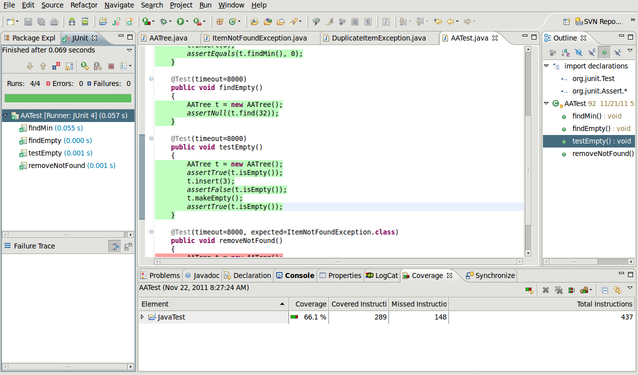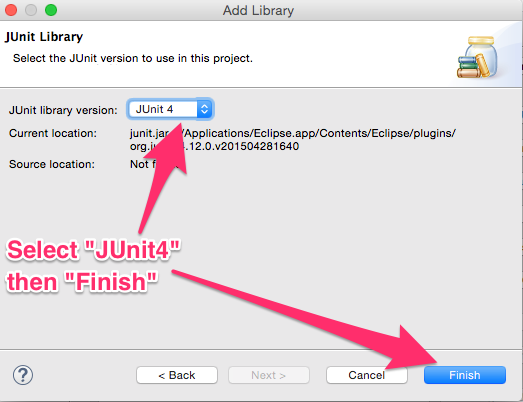
The versions of JUnit covered in this tutorial are JUnit 4 and JUnit 5.By the end, you will understand how JUnit works and be able to write test classes and test methods for your daily coding. You will learn the structure of a test class, some JUnit annotations and assert methods, how to create a unit test case in Eclipse and run it. But, first, we must ensure that the above class working is fine, and we need to follow the below structure in JUnit as follows.This tutorial helps you get started with JUnit - one of the most popular unit testing frameworks for Java application development. Now we need to write the test script for the above class.Here we created an Arithmetic class, and it has two methods that sum() and mul() as shown in the above class.Suppose, for example we have an arithmetic class as follows: Test case structure in JUnit are as follows: Consequently, composing and running unit tests with JUnit in Eclipse is fast, simple, and useful. Furthermore, obscuration has awesome help for JUnit – the IDE is delivered with JUnit as its default testing library. JUnit is upheld by practically any Java IDEs and assemble tool in this way, it is the default selection of developers to test their code. Furthermore, JUnit is one of the most well-known unit testing systems for Java advancement.In addition, as a software engineer, you ought to compose and run unit tests to guarantee that your code meets its plan and acts as expected.


Basically, JUnit is used to test the small types of functionality, or we can say that a small module of an application is normally a single class. We can integrate JUnit with eclipse by adding the external jar file of JUnit. JUnit is an open-source java library with the help of the JUnit library, we can perform the unit testing, or in other words, we can say that it is a unit testing framework.


 0 kommentar(er)
0 kommentar(er)
